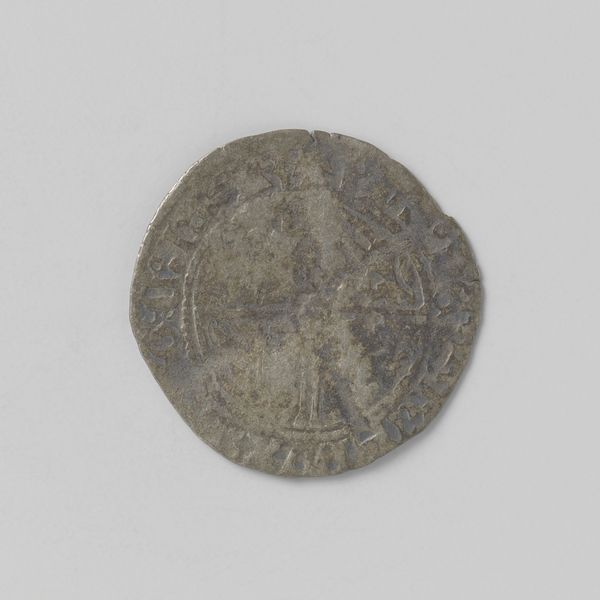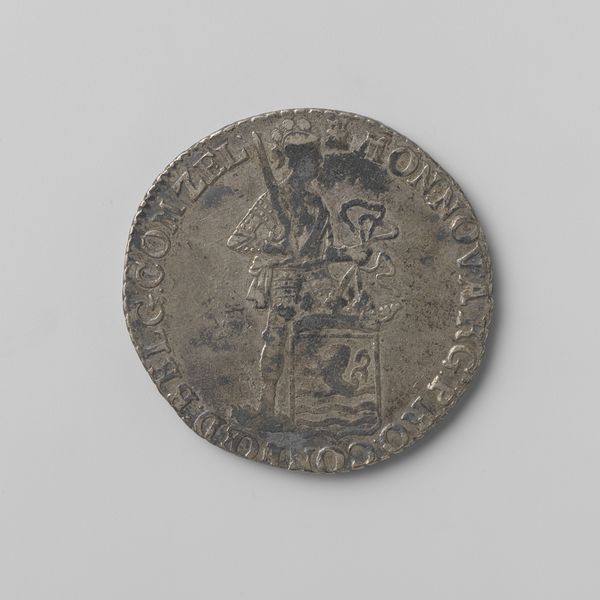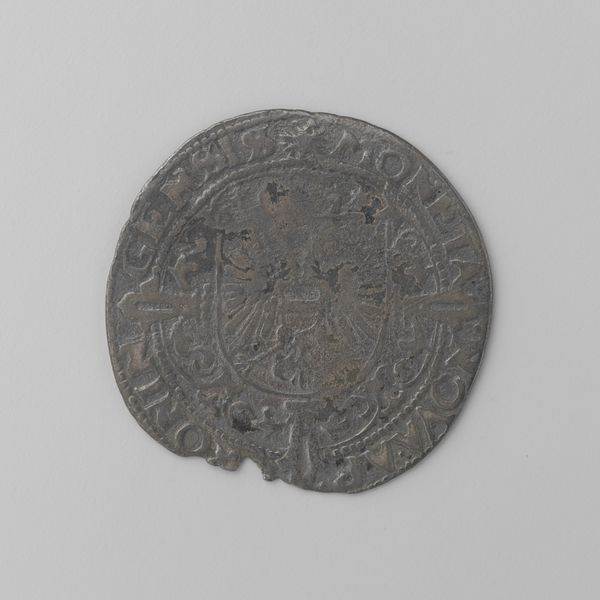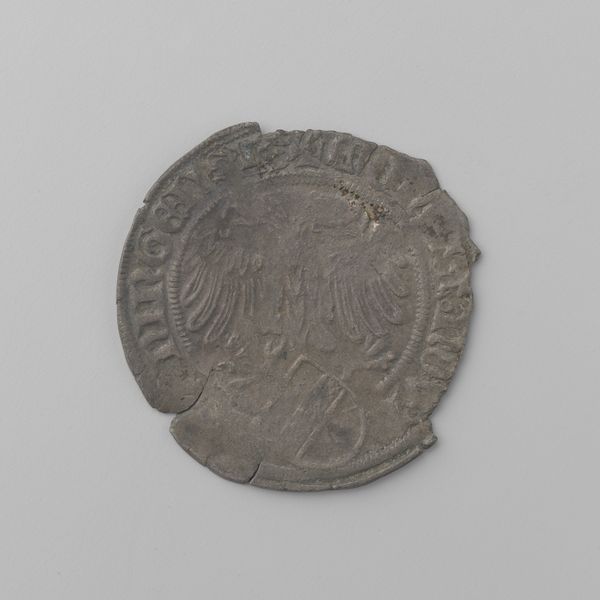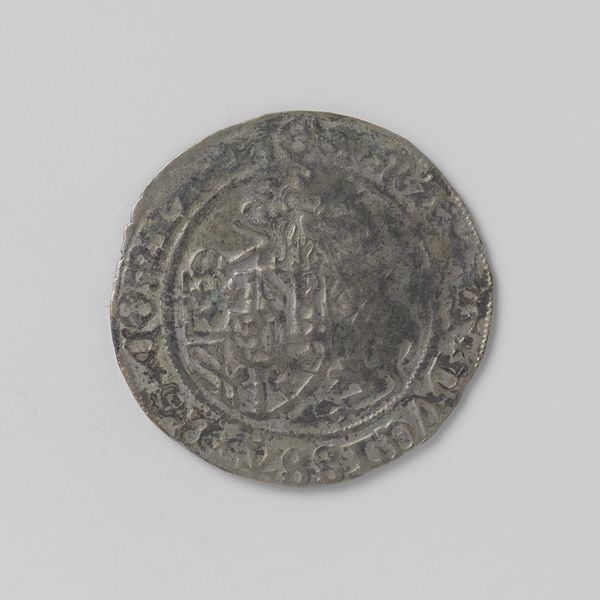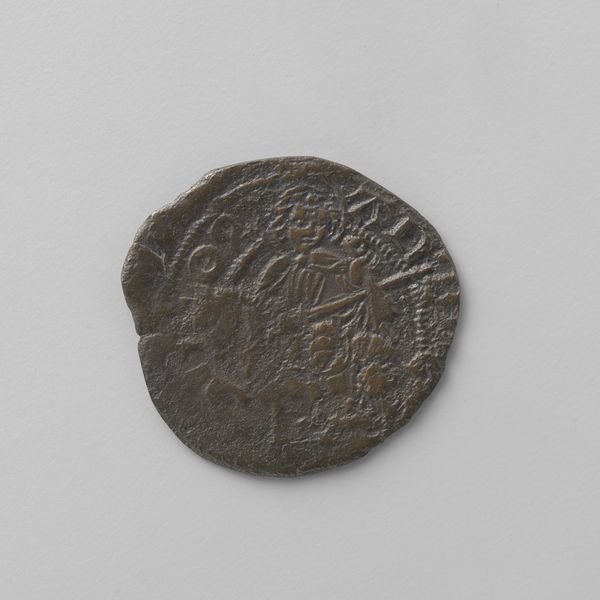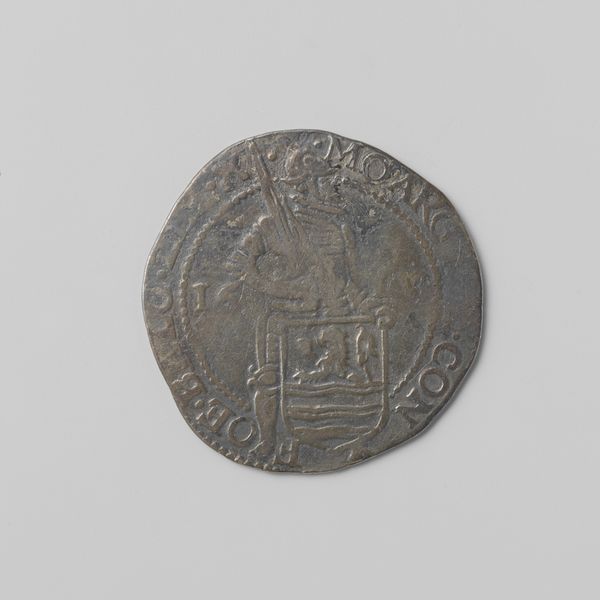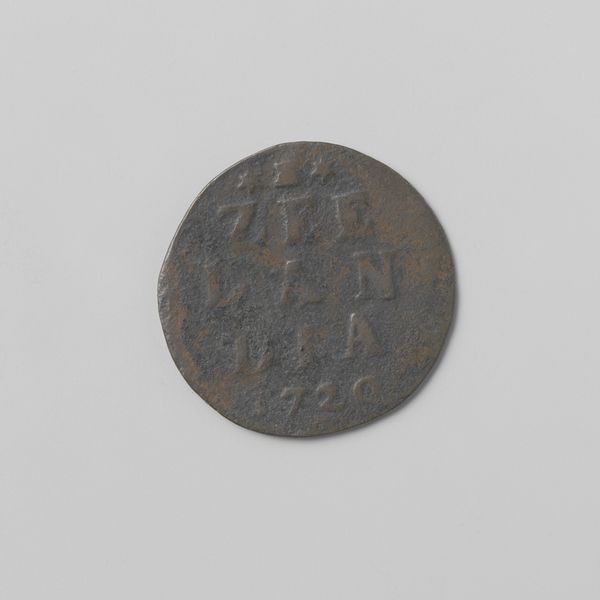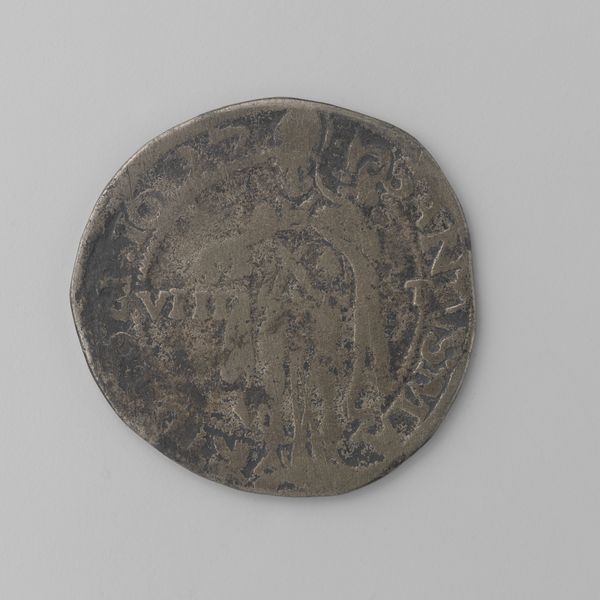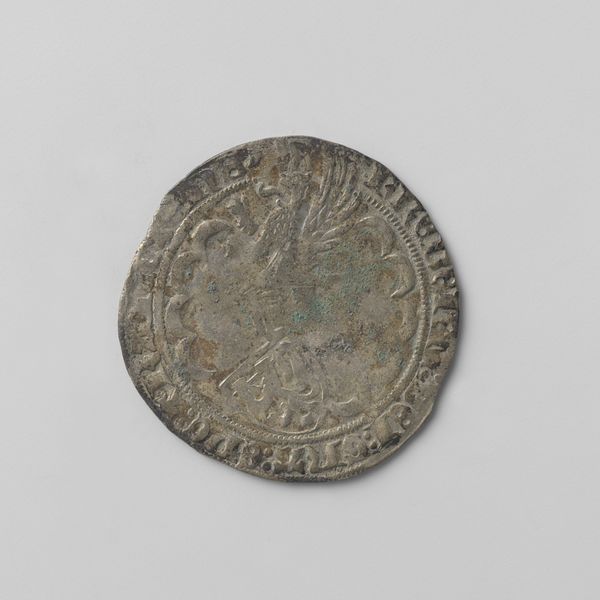
metal, sculpture
#
metal
#
sculpture
#
ancient-mediterranean
#
sculpture
#
coin
Dimensions: diameter 2.3 cm, weight gr
Copyright: Rijks Museum: Open Domain
Editor: This artifact is described as a “half vuurijzer van Franeker,” dating back to 1488. It's crafted from metal. It's quite worn, but I’m curious about its story. How do you interpret this piece in the broader historical context? Curator: The "vuurijzer," or fire iron, offers a glimpse into Franeker's societal structures in 1488. Think about how coinage, even fractional coinage, broadcasted power. Who was producing it, and for what purposes? It projects legitimacy, right? Editor: Absolutely, especially since the visual design appears quite deliberate despite the degradation. The "wear and tear" reminds me of the continuous public engagement with it. Who was likely seeing this on a day-to-day basis? Curator: Probably most townspeople. Now, think beyond the purely economic. What images are they meant to project? Coinage served to create shared identities, as it were, amongst people through everyday use. Was there another, similar piece made at the same time, to the same standards? Editor: That's such an important point—almost like propaganda but at an individual transactional scale. I didn't initially consider what this seemingly mundane piece might tell me about larger questions of communal identity and socio-political control. Curator: Precisely. A small object, certainly, but an eloquent ambassador of its time.
Comments
No comments
Be the first to comment and join the conversation on the ultimate creative platform.
